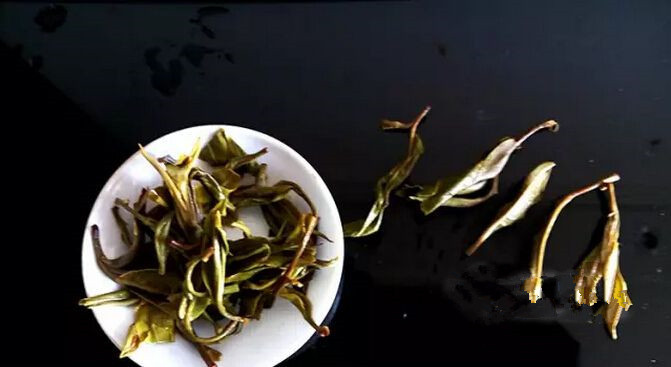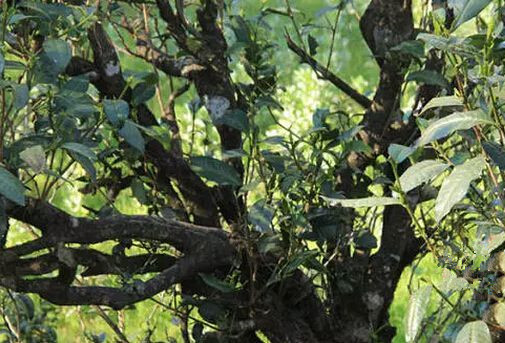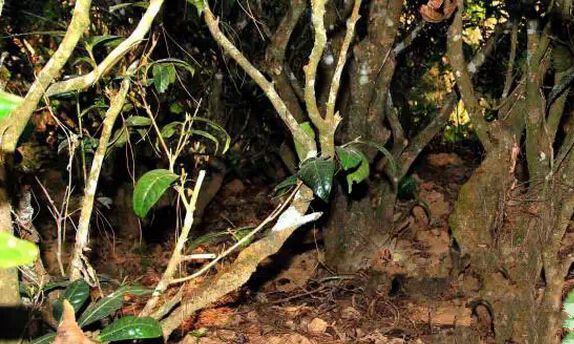Xiaocun Village of Nasai in Dongbanshan Mountain, Lincang
Chinese Name: 勐库东半山:那赛小村
English Name: Xiaocun Village of Nasai in Dongbanshan Mountain, Lincang
Reputation of Xiaocun Village
Xiaocun, with its humble and down-to-earth name, easily evokes the imagery of “small bridges and flowing water” described in the poetry of Ma Zhiyuan. The village truly lives up to this idyllic depiction, with its ancient tea trees standing tall and robust amidst lush bamboo groves, creating a picturesque scene reminiscent of a pastoral paradise. This setting brings to mind another poem:
“Low thatched eaves and small. Green grass by the stream. The charming melody is pleasing when drunk. Who are the white-haired elders? The eldest son hoes beans by the east of the stream. The middle son weaves chicken cages. The youngest loves to lie on the stream’s edge, peeling lotus pods.”
The beauty of the landscape and the high quality of the tea make it clear that Xiaocun holds a significant position in Mengku East Half Mountain and even in the broader tea industry of Lincang. Xiaocun possesses the largest and oldest ancient tea trees in the Nasai tea area.
Location
Xiaocun Village is a natural village under the Nasa Village Committee in Mengku Town, Shuangjiang County. It is situated in a mountainous area, 4 kilometers from the village committee and 24 kilometers from Mengku Town. The village covers an area of 0.95 square kilometers, with an elevation of 1,800 meters, an average annual temperature of 23°C, and annual precipitation of 200 mm, making it suitable for growing rice, corn, and other crops.
Cultural Aspects
Xiaocun has over 80 households, with seven or eight Han Chinese families. According to older Han residents, Han Chinese have been living in Xiaocun for about 120 years. The earliest Han settlers were the Yu and Chen families. These Han settlers mainly relied on farming and tea cultivation, and did not acquire Lahu people’s tea gardens and fields through trade. Han and Lahu people coexisted harmoniously, helping each other. The Chen family even funded road and bridge construction, earning the respect of the Lahu people. The Lahu people in Xiaocun lost very little land, with only about 30 households relocating in 1950. The Lahu have lived in the village for at least 500 years and predominantly speak the Lahu language. They refer to drinking tea as “la duó,” picking tea as “la pén,” and ancient tea trees as “la chī.” Xiaocun was once on a major transportation route; the ancient path from Mengku to Boshang and Lincang passed through Xiaocun, with the original path having been worn into a deep trench over the years.
Tea Gardens
Xiaocun exudes the aura of ancient tea trees. Ancient tea trees are found around old houses and their foundations, and bamboo ladders are provided for tea picking. The ancient path next to the old houses is quite wide. Walking 2 kilometers up the mountain along this path, one can still find many ancient tea trees mixed with the surrounding forest. The local Lahu people can no longer pinpoint the exact generations who planted them, as it is likely to have been over five or six generations ago. The sides of the ancient path still retain hundreds of acres of ancient tea gardens, with many tea trees having girths exceeding 80 centimeters, planted by the Lahu people before the Han Chinese arrived in Nasai.
Tea Characteristics
The tea from Xiaocun Village has a soft and smooth entry with a slight astringency that quickly opens up. It then becomes smooth and develops a sweet aftertaste with a noticeable thick, viscous tea soup that clings to the cup.















